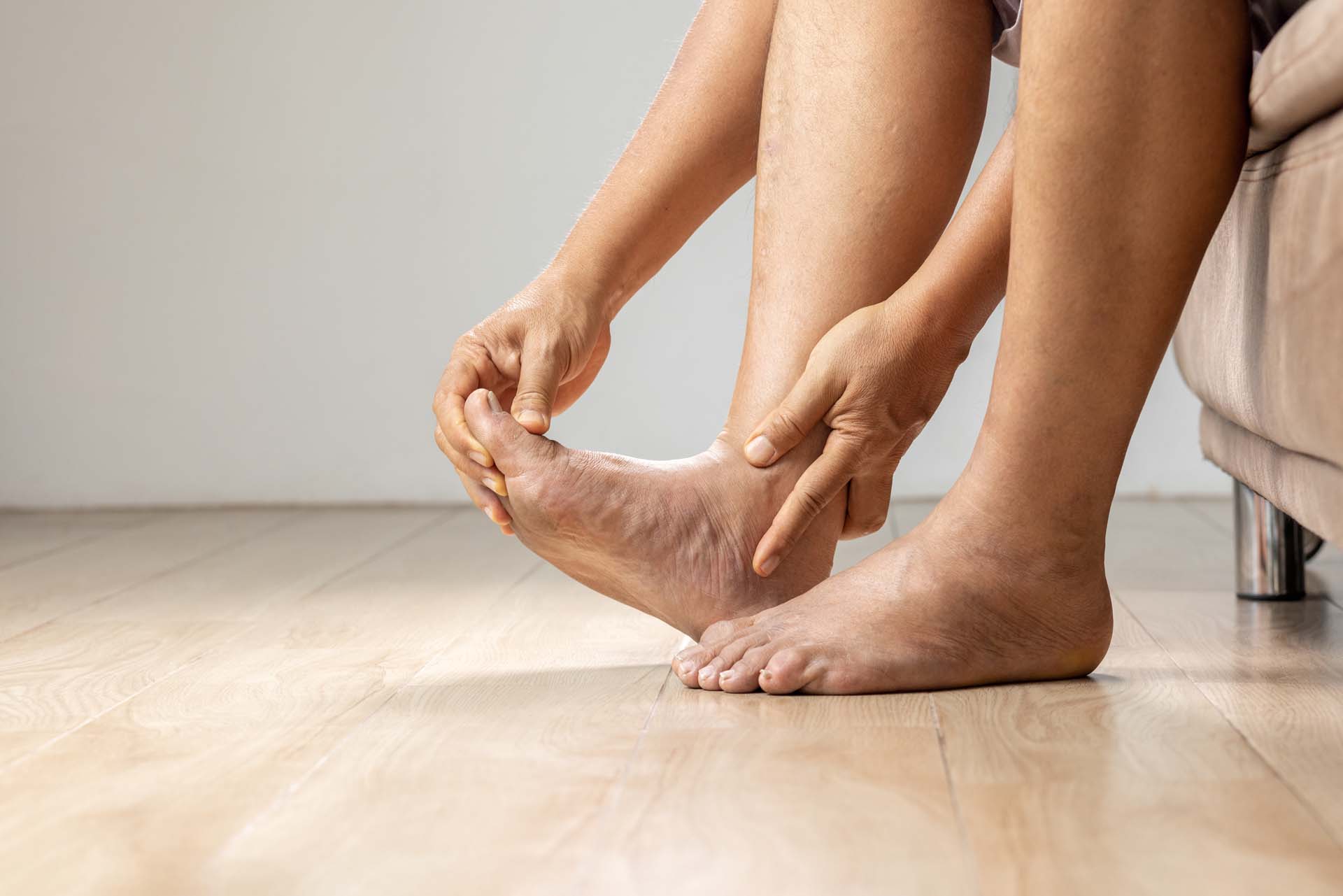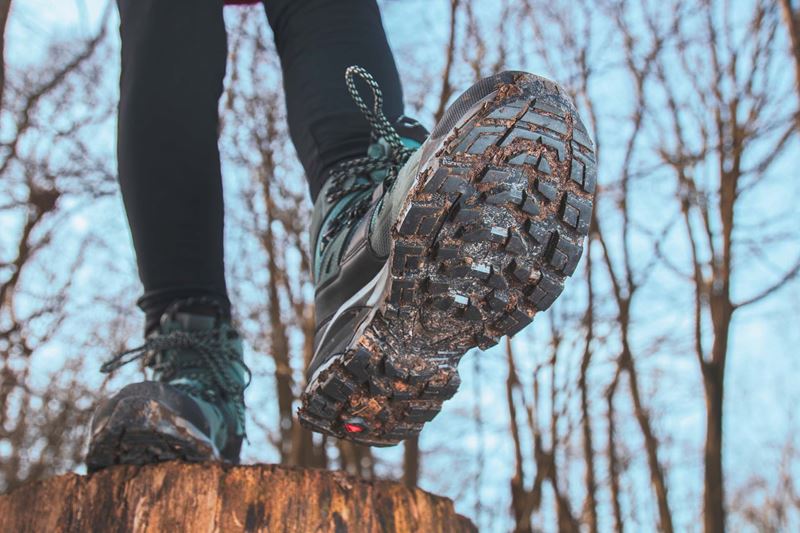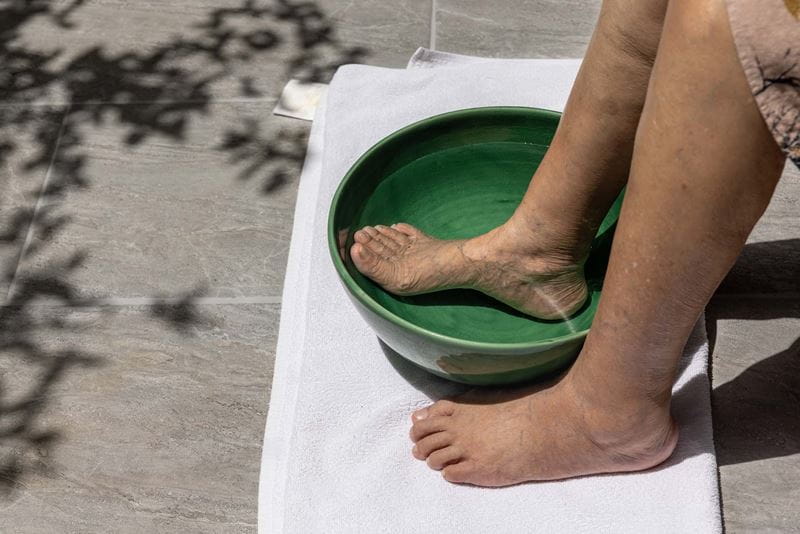Happy feet: 7 easy foot care tips from the experts
Put a spring in your step with the best advice on how to care for your feet as you get older.

Put a spring in your step with the best advice on how to care for your feet as you get older.

It can be easy to forget about foot care, especially during the colder weather, when they're hidden in socks, shoes and slippers - out of sight really can be out of mind.
But as we get older, looking after our feet gets even more important and just cramming them into socks and shoes can lead to issues that cause pain, mobility problems and affect our quality of life.
However if you make a little effort to give your tootsies some TLC, then you can help prevent infection, protect against injury and make moving more comfortable.
We’ve got seven tips from the experts on easy ways to put some extra spring in your step.
Our feet are the foundations of our body. Each foot contains 26 bones, 33 joints and a network of more than 100 muscles, tendons and ligaments.
Most of us take an average of 6,000 steps per day, which translates to more than two million steps per year. With each step you'll be putting between one to one and-a-half times your own body weight onto your feet.
So when something goes wrong with them it can be disastrous, limiting our ability to walk and carry out day-to-day activities.
Physical changes occur in our feet as part of the ageing process.
The Royal College of Podiatry says that other general signs of ageing include more regular aches and pains, developing bunions, signs of clawing of the toes and general circulatory problems. “Painful and uncomfortable feet aren’t a natural part of growing old or something to put up with. A lot can be done to improve comfort, relieve pain and maintain mobility,” they say.
We've spoken to two foot care experts to get the best advice on how to care for your feet - Dina Gohil, of DG Podiatry, and Bente Smith-Rewse, biomechanics specialist and founder of Enertor insoles.
Spare a couple of minutes every day to give your feet a once-over. Gohil says: “Try to do a ‘foot scan’ when you’re putting your socks on in the morning or taking them off before bed.
"Use your hands to softly run over both feet, looking out for key areas of concern, including athlete’s foot, bunions, nail fungus, cracked heels, calluses, tingling sensations or pins and needles (like numbness), pain (burning), a dull ache, swollen feet, wounds or sores that don’t heal.
"If you spot any of these, book an appointment to see your GP or local podiatrist.”
Smith-Rewse agreed that it's vital to pay attention to what is going on in our feet.
“Your feet can reveal a lot about underlying medical issues before they manifest elsewhere, which may surprise you," she said. "Pay attention to tingling, numbness, joint pain or ulceration and get any issues treated before they worsen."
"Your feet are the foundation for your entire body," says Smith-Rewse. "So it pays to look after them and, if needed, regular visits to a podiatrist/health practitioner can help you to maintain your foot health."
Whatever your footwear, make sure it fits properly. Don't buy shoes or boots that are too big or two small - it can lead to a multitude of problems.
Our experts warn that footwear that is too big or wide can allow your feet to slide around, which can cause friction and lead to blisters. However, shoes that are too small or tight and lead to bruised toenails, nerve pain, bunions, hammertoes or other deformities.
It's not just the fit, but the structure of your shoe that can make a difference. Gohil warns: “In wet or cold weather choose waterproof and supportive boots, shoes or trainers to keep your feet warm, dry and protected.
"While wellies are great for muddy walks in the woods, they are not designed for long periods of wear, offering little support and structure for your feet."

Smith-Rewse added: “It’s important to make sure your footwear sits snuggly on your feet but isn't tight. If the size is too large it could cause you to trip and fall.
"During winter it is best to wear footwear with a grip design on the sole of the footwear to reduce the risk of falls but do check regularly for wear."
She also recommends mixing up your footwear to avoid wearing one style of footwear too much.
As we get older painful feet can become an issue, often due to the fat pads under our soles and heels becoming flatter. This happens as part of ageing and makes them less effective at shock absorbing.
Smith-Rewse says: “It’s important to consider the soles of the shoes. Avoid any that appear too thin as these will not provide adequate shock absorption. A good sole will also help provide more structure and support for the ankle and foot.
“To add comfort, and in cases of discomfort or pain, a pair of proven shock absorbing insoles are likely to help you. Not only do they provide 89% more shock absorption, they will aid posture and reduce discomfort in ankles, feet, hips, lower back and legs."
DId you know there are 250,000 sweat glands in our feet and we lose up to a teaspoon of sweat from our feet every day? That's why socks are so important to keep our feet dry and free of smells and infection.
Our experts recommend wearing socks that can wick sweat away from our feet and to change socks regularly. Other issues can come from the fit of socks, as they may bunch up around the toes and cause rubs or cut in around the ankle affecting our circulation.
As we age, our feet can start to dry out and lose their natural oils, causing dry skin and cracked heels.
This can lead to hard skin and cracks, which aren't dangerous, but can become painful and infected if left untreated. Gohil says: “The best way to prevent and relieve cracked, dry heels is to regularly apply (every day if possible) a good-quality, moisturising foot cream.
"Vaseline will lock in moisture on the heels, and you can also try products found at home, such as coconut or olive oil to help soothe and heal any open wounds.” Many podiatrists also recommend CCS Cracked Heel Repair Balm.
Gohil says salt water foot soaks have many benefits, including relaxing and cleansing your feet, and are easy to do at home. Other benefits include reducing pain, aches, and soreness by decreasing soft-tissue stress.
A soak of 10-30 mins can be excellent during the week. Finish it off by rubbing in a moisturising cream of your choice.
Good nail care is really important in keeping your feet healthy and comfortable. Nails that are too long can press against the end of the shoe and cause soreness or nails that are cut too short or badly can become ingrown.
If you aren't sure or struggle to do them yourself book an appointment with a chiropodist or podiatrist, or Age Concern UK has a toenail cutting service.
Gohil says: "Take the time to look over the nails regularly, checking for discolouration or a change in the texture, as this can be an early sign of nail fungus.”
She also recommends taking a break from nail polish from time to time - saying, “toenails can soak up nail varnish, causing the nail to dry out. When this happens, yeast and bacteria can form underneath the polish, which can cause fungal nail infections.”

It's important to keep active as it helps to keep feet healthy - movement tones up muscles and helps to strengthen arches and stimulates blood circulation.
Gohil says: “Try to incorporate some regular foot exercises, which will not only help with maintaining balance and mobility, but also keep areas such as your ankles strong, helping to minimise any injury.”
Two simple foot exercises to try.
Gohil says to avoid painful conditions such as chilblains during the colder months, keep feet warm by wearing woollen socks or putting an extra blanket over your feet.
Chilblains are an abnormal response by the blood vessels to changes in temperature. In winter, they can be exacerbated by a hot shower or bath.